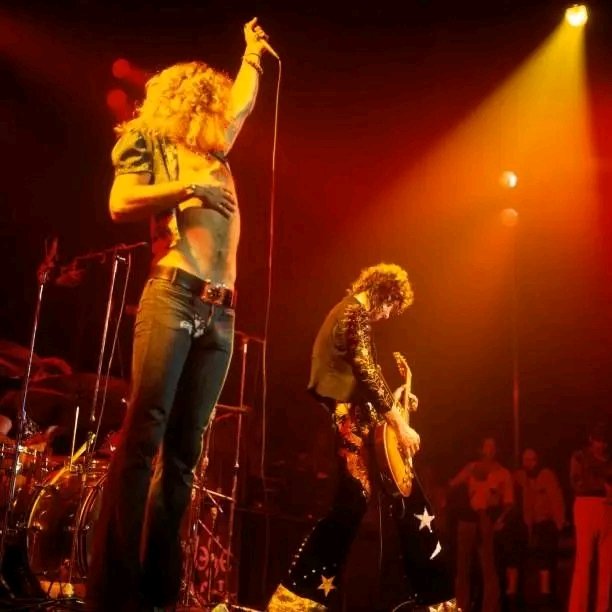“Lights, Legends, and the Lens: How Led Zeppelin’s Epic July 1973 Madison Square Garden Concerts Were Captured for The Song Remains the Same”
In the final days of July 1973—on the 27th, 28th, and 29th—Led Zeppelin brought Madison Square Garden to its knees with three explosive, sold-out performances that would go down in rock history. The band was at the height of its powers, riding the monumental success of Houses of the Holy, and New York City pulsed with electric anticipation. But these weren’t just any shows—these were the nights that would be immortalized on film and vinyl. Zeppelin had hired a full professional film crew to capture their performances, paving the way for what would become their concert movie The Song Remains the Same and its legendary soundtrack.
The band employed up to four 35mm Arriflex 35BL cameras, loaded with 400-foot film cartridges, to record the stage action across the nights. Depending on the evening, camera coverage varied, and a compact 16mm Éclair ACL camera was also used for insert shots, backstage glimpses, and crowd reactions. These cameras, revered for their flexibility and quiet operation, allowed for close-range filming without compromising audio fidelity. The film crew, deeply embedded in the Zeppelin machine, took careful notes and still photographs from the earlier gigs of the week (July 24–26) to ensure they understood the lighting cues and the flow of the setlist. This meticulous preparation was essential, given Zeppelin’s notoriously dynamic live improvisations.
The setlist from those MSG nights reads like a thunderous pilgrimage through the Zeppelin canon: “Rock and Roll,” “Celebration Day,” the explosive “Black Dog” (with its “Bring It On Home” intro), “Over the Hills and Far Away,” “Misty Mountain Hop,” the brooding blues of “Since I’ve Been Loving You,” and the atmospheric “No Quarter.” “Dazed and Confused” featured the mystical “San Francisco” interlude, while “Whole Lotta Love” included a searing medley capped with “Let That Boy Boogie.” The concerts closed with fan-favorite encores like “Heartbreaker” and “The Ocean,” capturing the wild energy and experimental edge Zeppelin was known for.
The raw footage from each night was taken to Aquarius Transfer in New York City, where the dailies were reviewed under the watchful eyes of the Director of Photography, manager Peter Grant, Robert Plant, and Jimmy Page. These sessions were pivotal in shaping the visual narrative of the film. The iconic rock photographer David Redfern was also on hand, capturing haunting still images that would become some of the most famous visual documents of Zeppelin’s 1973 tour.
Released in 1976, The Song Remains the Same became both a visual time capsule and a larger-than-life testament to Zeppelin’s stage might. In 2003, a deluxe DVD edition revived the film for a new generation, and in November 2007, a remastered version of both the film and its soundtrack album brought fresh sonic and visual clarity to this legendary run. The concerts at Madison Square Garden were not only the climax of a historic tour—they were the moment Led Zeppelin stepped into the cinematic spotlight and ensured their legacy would truly remain the same.
